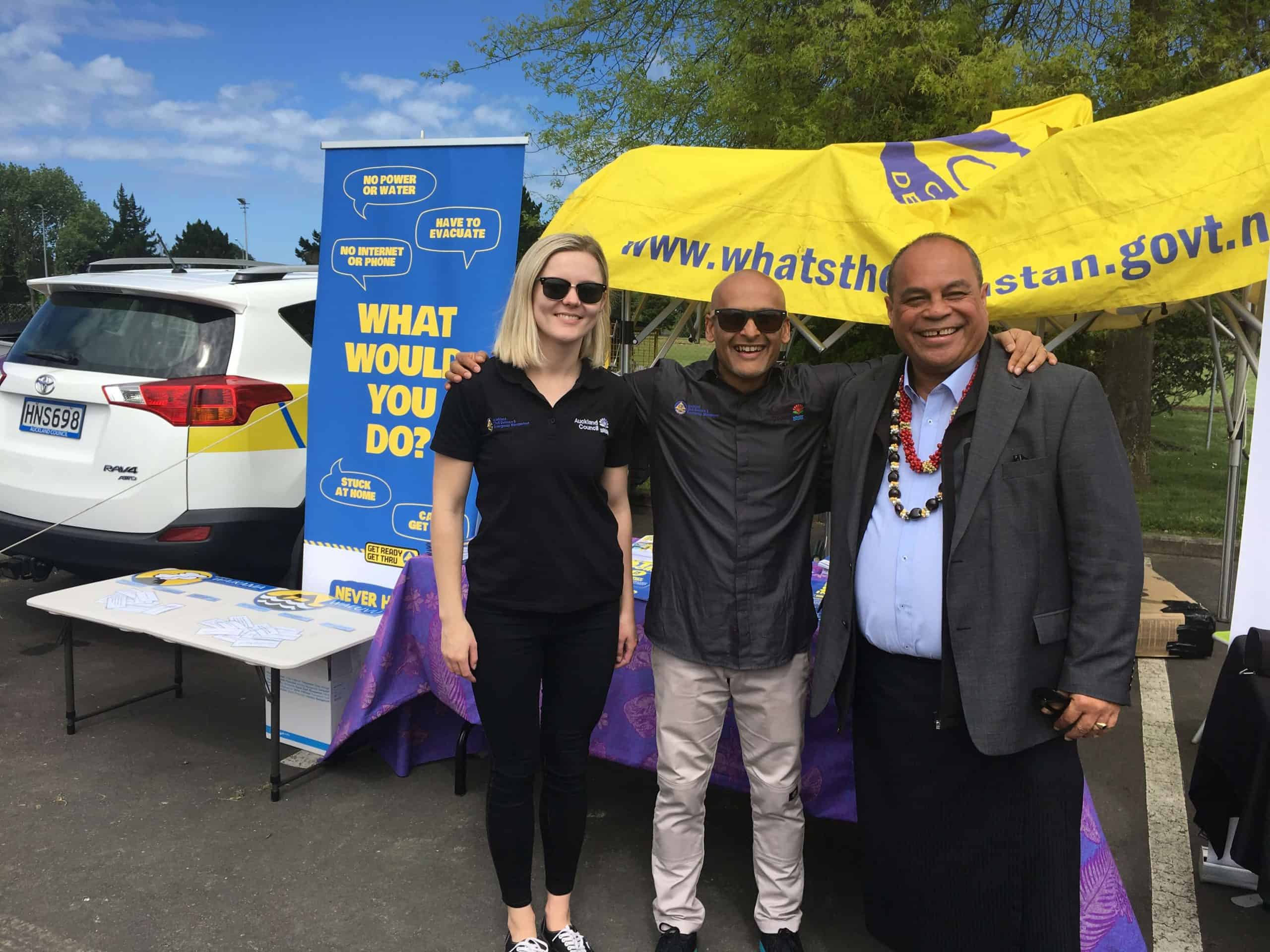Auckland Emergency Management: Working with Auckland’s Pacific Peoples
27/07/2018
By Rohan Jaduram, Resilience and Welfare Advisor, Auckland Emergency Management
Auckland is home to the largest Pasifika population in the world. Pacific peoples make up 15% of Auckland’s population, but generally have very little awareness of hazards in the Auckland region (more detail on this is outlined in The University of Auckland’s ‘Pacific Island Leader Perspectives and Anticipated Responses to Natural Hazards in Auckland’ study which offers an in depth understanding of Auckland’s Pacific community). For many Pacific peoples in Auckland, English is also their second language. This means that developing language-specific emergency preparedness resources is vitally important to ensure that individuals and communities are prepared and able to take action, before, during and after an emergency.
As part of the Resilient Auckland Communities project, researchers have been working with Auckland Council on a Pacific Island Community focused project. This has involved Auckland Emergency Management identifying ways to improve communications and engagement with non-English speakers and migrants, including Pacific peoples.
The University of Auckland study mentioned above validated Auckland Emergency Management going beyond their normal communication and engagement work with Pacific peoples by, for example, translating information on hazards, risks and preparedness into Samoan, Tonga and Fijian, to help inform how we will do things in the future.
Auckland Council has developed best practice guidelines for translations. The guideline identifies Samoan and Tongan as one of the most commonly spoken languages other than English, and identifies Pacific peoples as a community with a higher percentage of people who don’t speak English. The guidelines have been useful in allowing Auckland Emergency Management to determine which Pacific community languages should be translated both regionally and across Auckland’s 21 local boards.
After the Christchurch earthquakes the Christchurch Migrant Inter-Agency Group developed a ‘lessons learned’ report that underscored the importance of having translated material. Translating hazard, risk and preparedness information into Pacific languages has been a first step to getting emergency preparedness understood by Pacific peoples. Language-specific resources allow us to more effectively engage with those Pacific communities already passionate and motivated to become more prepared.
The protection and promotion of community languages has assumed greater urgency in the last ten years with the increased ethnic diversity in Auckland and the decline of some community languages. Pacific peoples, for example, have witnessed significant language loss. Within this cultural context, Auckland Emergency Management has worked collaboratively with the Ministry of Pacific Peoples in supporting various Pacific language weeks.
The Ministry for Pacific Peoples works closely with Pacific communities to maintain and promote community languages by running annual language weeks. They coordinate with key community groups such as Fa’alapotopotoga mo le A’oa’oina o le Gagana Samoa i Aotearoa, who have been organising Samoan Language Week for the last ten years. Auckland Emergency Management’s involvement with the language weeks has enabled connection to a much wider narrative around acknowledging and celebrating cultural diversity, while sharing and promoting messages about building a resilient Auckland with our diverse communities in their language.
Auckland Council, which Auckland Emergency Management is part of, works where there are net benefits for communities, not exclusively in emergency management. In this regard, they have increased their presence in recognised ‘cultural spaces’ such as community festivals and cultural programmes. A particular highlight was being invited to ‘go live’ with an audio-visual resource developed by their public education team at the launch of Tongan Language Week held at the Auckland Museum. The resource features an interview with a Tongan family displaced during the West Auckland floods in March 2017. The resource was widely shared on social media, resulting in a significant increase and presence on Pacific focused social media sites.
The above actions and initiatives represent phase one in Auckland Emergency Management’s communication and engagement with Pacific communities. However, this phase did not involve input from the community. Hazard and risk communication approaches have traditionally had limited opportunity for community engagement and influence. This is an area where considerable improvement can be achieved by integrating the learnings from the University of Auckland’s Pacific Island Leader study and co-designing disaster communication for Pacific communities in phase two.
The study promotes best practice models that are community driven and agency supported. Key recommendations, such as engaging with Pacific communities when disaster occurs in the Pacific, developing a polymedia communication strategy, working across Church-based communities where possible, and working with elders and leaders, including emerging young leaders, are the drivers Auckland Emergency Management will look at including in their work.

Phase two will have a strong collaborative component which will build on the relationship developed with The Ministry for Pacific Peoples, which is seen as a trusted source of information, and includes a good representation across a range of organisations. This will involve undertaking a series of community workshops in partnership with The University of Auckland and New Zealand Red Cross.
These workshops will facilitate co-development of information and resources with the community. It builds on Auckland Emergency Management’s participatory and inclusive approach and the approach is further endorsed by the Pacific Island Leader study. The workshops will use the Effective Hazards and Risk Communications programme to seek feedback on how best to communicate and engage with Pacific peoples on hazards, risks and emergency preparedness information. It is also an opportunity to further test resources that have been developed for language weeks and other information with an Auckland application in mind. For instance, pre-recorded emergency preparedness messages in Samoan that have been developed through a pilot led by Christchurch City Council.
In addition, Auckland Emergency Management are partnering with the Ministry of Civil Defence & Emergency Management on a new approach based on the study. The new approach will guide how emergency information is shared before, during and after an emergency to a wide range of ethnic audiences, including Pacific peoples, which will involve working with experts and ethnic media outlets.



